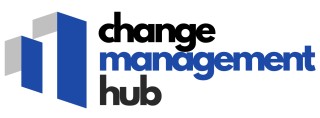
Understanding the Role of Corrective Action in Change Management
Understanding Corrective Actions in Change Management
Corrective actions play a crucial role in the broader framework of change management. They are essential for addressing issues that arise during the implementation of changes, ensuring that the transition is smooth and effective. When a nonconforming product or process is identified, a corrective action request is initiated to rectify the issue and prevent its recurrence.
In the context of change management, corrective actions are not just about fixing problems; they are about enhancing the overall quality of processes and outcomes. This involves a systematic approach to identifying the root cause of an issue, implementing a solution, and verifying its effectiveness through objective evidence. The goal is to ensure that the change process is robust and sustainable.
The Role of Suppliers and Stakeholders
Suppliers and other stakeholders are often integral to the change management process. When issues arise, a supplier corrective action request may be necessary to address problems related to products or services provided by external partners. Effective communication and collaboration with suppliers are vital to ensure that corrective actions are implemented successfully.
Each corrective action request should be documented in a standardized form, which serves as a template for capturing all relevant information. This includes the issue description, responsible parties, and the corrective actions to be taken. A well-structured template helps streamline the process and ensures that all necessary steps are followed.
Ensuring Effective Implementation
For corrective actions to be effective, they must be part of a well-defined process. This involves regular inspection and monitoring to ensure that the actions taken are achieving the desired results. Additionally, maintaining a clear line of contact with all parties involved is crucial for timely response and resolution of issues.
Implementing corrective actions is not without its challenges, but by understanding their role in change management, organizations can better prepare to address these challenges. For more insights on crafting an effective project plan for change management, you can explore this resource.
Key Elements of a Corrective Action Request Template
Essential Components for a Robust Template
Creating a corrective action request template that effectively addresses issues in change management requires careful consideration of several key elements. These components ensure that the process is thorough, efficient, and leads to meaningful improvements.
Identification and Description of the Issue
Begin by clearly identifying the nonconforming products or processes. This section should include a detailed description of the issue, supported by objective evidence such as inspection reports or quality audits. Providing a comprehensive background helps in understanding the root cause and facilitates the development of effective corrective actions.
Root Cause Analysis
Conducting a root cause analysis is crucial in determining why the issue occurred. This analysis should be documented within the template, outlining the methods used and the findings. Understanding the root cause is essential for implementing corrective actions that prevent recurrence.
Corrective Actions and Responsibilities
Detail the specific corrective actions to be taken, ensuring they are actionable and measurable. Assign responsibilities to individuals or teams, clearly indicating who is responsible for each action. This clarity helps in accountability and ensures that the actions are completed effectively.
Supplier Involvement and Communication
If the issue involves a supplier, include a section for a supplier corrective action request. This part of the template should outline the communication process with the supplier, ensuring they are aware of the issue and the required actions. Effective communication with suppliers is vital for resolving issues that impact the supply chain.
Verification and Objective Evidence
Include a section for verifying the effectiveness of the corrective actions. This involves collecting objective evidence to demonstrate that the actions have resolved the issue. Verification ensures that the corrective actions have achieved the desired outcome and that the issue will not recur.
Documentation and Certification
Finally, ensure that all actions, responses, and evidence are documented within the template. This documentation is essential for maintaining records and may be required for certification purposes. A well-documented process enhances transparency and trust in the change management process.
Steps to Develop a Comprehensive Template
Developing a Robust Template for Corrective Actions
Creating a comprehensive corrective action request template is crucial for effectively managing nonconforming products and processes. A well-structured template ensures that all necessary information is captured, facilitating a smooth corrective action process. Here are the steps to develop a robust template:
Identify Key Information Fields
Start by identifying the essential fields that need to be included in the template. These fields should capture all relevant details about the issue, such as:
- Issue Description: Clearly describe the nonconforming issue, including any relevant inspection results or quality concerns.
- Root Cause Analysis: Document the root cause of the issue, providing objective evidence to support the findings.
- Corrective Actions: Outline the actions required to address the issue, specifying who is responsible for each action.
- Supplier Information: Include details about the supplier, especially if a supplier corrective action request is involved.
- Contact Information: Provide contact details for the responsible parties to ensure clear communication.
- Response and Follow-up: Set deadlines for responses and follow-up actions to ensure timely resolution.
Design a User-Friendly Form
The template should be easy to use and accessible to all stakeholders involved in the corrective action process. Consider the following design elements:
- Clarity: Use clear and concise language to avoid misunderstandings.
- Structure: Organize the form logically, grouping related fields together.
- Flexibility: Allow for additional notes or comments to capture any unique aspects of the issue.
Incorporate Quality Assurance Measures
To ensure the effectiveness of the corrective actions, integrate quality assurance measures into the template. This might include:
- Objective Evidence: Require documentation or evidence to verify the completion of corrective actions.
- Inspection and Certification: Include fields for inspection results and any necessary certifications.
- Review Process: Establish a review process to evaluate the effectiveness of the corrective actions taken.
By following these steps, you can develop a corrective action request template that not only addresses current issues but also helps prevent future occurrences. For more insights on crafting effective readiness strategies for change management, visit this resource.
Common Challenges and Solutions in Implementing Corrective Actions
Facing Challenges in Implementing Corrective Actions
Implementing corrective actions is a critical component of change management, essential for maintaining the quality and compliance of products and processes. However, it is not without its challenges. Here are some common hurdles you might face and suggested solutions to effectively overcome them.
- Identifying the Root Cause: Pinpointing the root cause of nonconforming issues can be difficult but is crucial for effective corrective action. To tackle this, employ thorough inspection methods and ensure the input from all responsible departments. Objective evidence and a detailed investigation are essential to avoid recurrence.
- Supplier Engagement: When supplier noncompliance surfaces, a Supplier Corrective Action Request (SCAR) might be required. Ensuring timely and effective response from suppliers involves establishing clear communication channels and setting specific timelines for action.
- Effective Communication: Lack of clear communication between teams can hinder the corrective action process. Use structured templates and precise forms to document actions and responses. Designate a contact person responsible for coordinating communication to streamline the process.
- Documenting and Tracking Progress: Keeping track of corrective actions is essential for accountability. Utilize digital tools and standardized templates to document every step, from the initial request to the outcome of actions.
- Resistance to Change: Organizations may encounter resistance from personnel when implementing corrective measures. It's vital to engage teams early in the process and articulate the benefits of corrective actions for individual and organizational growth.
- Ensuring Compliance with Certification Standards: Organizations need to align their actions with industry certification standards. Regular quality inspections and audits can provide the necessary assurance. Incorporate industry benchmarks into the corrective action process to maintain standards.
Addressing these challenges proactively ensures that corrective actions lead to meaningful improvements in quality and compliance, fostering a culture of continuous improvement.
Best Practices for Effective Communication and Follow-up
Promoting Efficient Communication and Follow-Up
Communicating effectively is a core component of managing corrective action requests. Ensuring every stakeholder, especially the supplier, is well informed about the actions required and the expectations can significantly streamline the corrective action process. Here’s how clear communication and diligent follow-up can improve the quality of outcomes:- Detailed Information Sharing: When issuing a corrective action request, make sure all relevant information is communicated using the form. This includes the description of the issue, nonconforming products, number, and evidence gathered during the inspection. The goal is to provide a comprehensive view that the supplier can act upon.
- Assigning Responsibilities: Clearly define who is responsible for each part of the corrective action process. This includes identifying the root cause, implementing the corrective actions, and verifying the response. A well-structured form in the template should lay out responsibilities to avoid confusion.
- Evidence and Documentation: Encourage all parties to maintain objective evidence throughout the implementation of corrective processes. This would include records of actions taken and their effectiveness, ensuring the request aligns with certification standards.
- Regular Follow-ups: Schedule follow-up interactions to review progress and address barriers as they arise. Keeping a line of contact open facilitates accountability and fosters a cooperative approach to resolving the issue at hand.
- Feedback Loop: Implementing a feedback system allows for the evaluation of the corrective action's success and provides an opportunity for continuous improvement. This process also ensures that lessons learned are shared and used for developing future templates.













